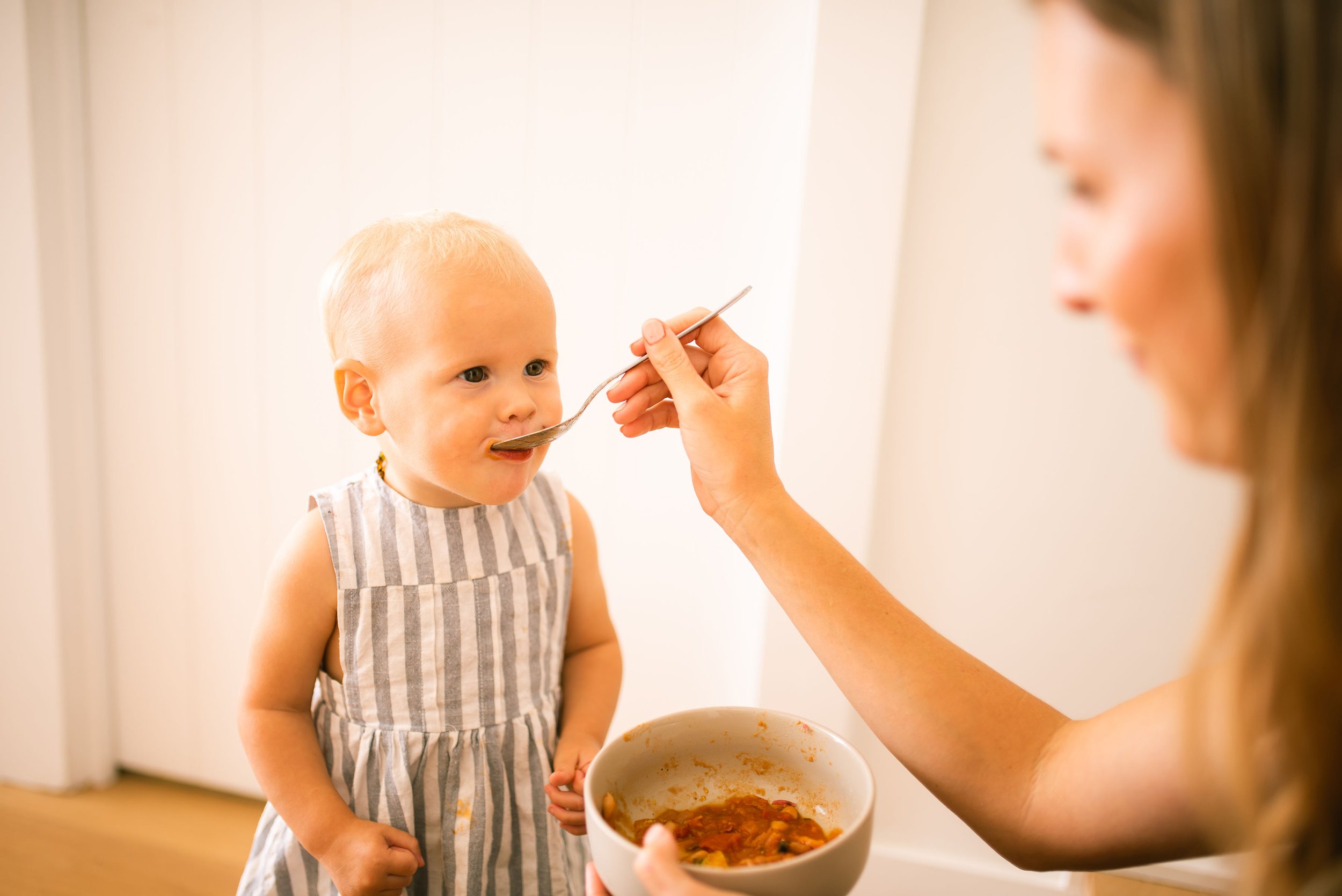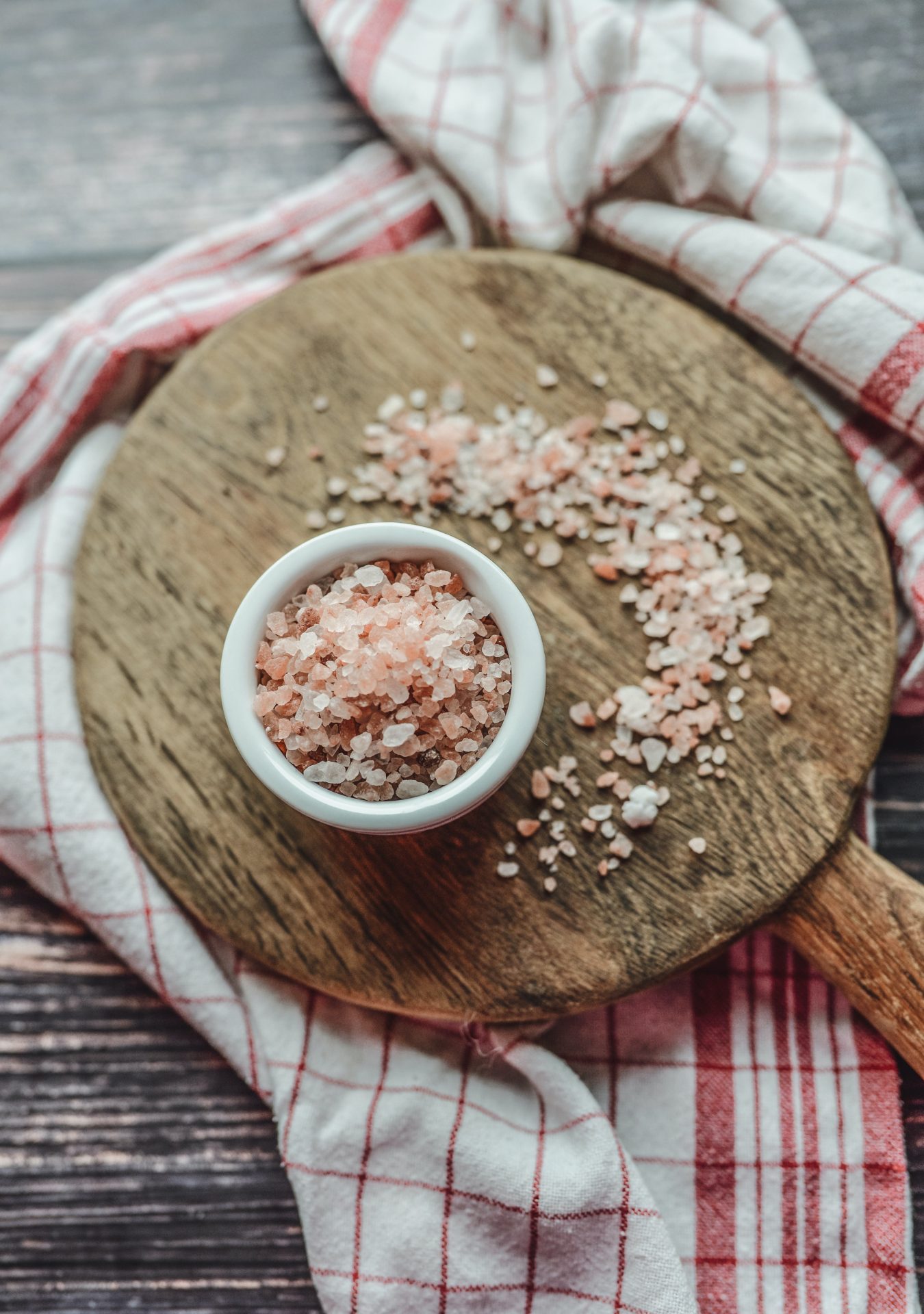You may have noticed that rice cereal is still a leading recommendation from many health practitioners when discussing first foods to introduce to your little one, but many families are questioning why this is the case, if it is really necessary and whether it is the most beneficial first food.
There are two key reasons behind this recommendation:
-
Rice cereal is fortified with iron
-
It is considered to be low allergenic
While these points are valuable, there are many other factors to consider when making a decision about your child’s first foods – and many choices available that will also fulfill this criteria.
Some nutritional downsides to rice cereal include:
-
Synthetic forms of iron found in rice cereal are often a cause of constipation
-
Rice cereal is highly processed – it is essentially a high carbohydrate food with virtually no fibre
-
It is not a nutrient dense option – lacking in most vitamins and minerals. While it is fortified with iron it is missing the other important mineral zinc, as well as protein, fat, essential fatty acids, B vitamins, calcium, vitamin A and more
Another query from many parents is why, if the recommendation is to introduce allergy foods early and often would we be seeking a food that is considered low allergenic? While the top allergens may not make up the bulk of your child’s diet, their introduction should be encouraged with a goal of exposing your child to a variety of foods as much as possible.
Rice cereal and arsenic
A recent congressional subcommittee issued a report on toxic metals found in baby food (including organic brands) and found that rice cereal had alarming levels of toxic metals such as arsenic. In 2021 the FDA finalised guidance for infant rice cereal, recommending it contain no more than 100 parts per billion arsenic. This report said some brands of cereal used ingredients that tested as high as 913 parts per billion arsenic, while another organic brand used ingredients testing as high as 309 parts per billion arsenic. As babies’ brains are still developing there is a lot of concern about how those metals could impact cognitive development.
Rice cereal processing
Despite the arsenic warning, rice in its whole grain form can be a healthful inclusion in your varied diet (although not really recommended for infants) when properly prepared and consumed in moderation. Much of the goodness in rice sits in the bran and germ – the parts that are unfortunately removed during the processing of rice cereal to turn it into flakes. This makes it quick to prepare, but is vastly different to the traditional methods of preparation – soaking the grain, cooking it in large amounts of water, fermenting it and utilising a long cooking time to naturally break down the starch and phytates for easier digestion and nutrient assimilation. Read more about preparing grains here.
The food that is left after processing is a high carbohydrate, high glycaemic food with no fat, fibre or protein to help stabilise blood sugars. In fact, Endocrinologist and Obesity Australia Chief Professor, John Funder, says that starting a child off on a diet of rice cereal was like giving them an oral glucose tolerance test (the GTT test you may have had when pregnant to test for gestational diabetes), and does not support the child to be able to recognise their own appetite and hunger cues.
Nutrients in rice cereal
Because there’s not much nutritional value left in the highly processed rice cereal, it is then fortified with synthetic vitamins such as iron. Unfortunately, the form of iron added is the poorly absorbed form – ferrous sulfate. This poor quality form of iron is often associated with constipation, nausea and can cause other digestive issues.
The other factor to consider is that the iron in rice cereal is the non-haem form, the same as plant-based sources of iron. Non-haem iron, while still beneficial, is only absorbed 2-13% by the body – whereas heme sources of iron found in meat and seafood are absorbed 25-40%. This means that even if the amount of iron in rice cereal is the same as in meat, the body will take much more from the meat than the cereal as an example. You can read more about iron on this blog here.
A window of opportunity
When our babies start solids we have an amazing opportunity where they are (mostly!) very excited and willing to try new foods and are very receptive to different tastes. Trust us… this may not last forever (hello 2 and 3 year olds!), but we can maximise the opportunity while it lasts. Have you tasted rice cereal before? It tastes very bland and has the texture of clag glue. When starting solids, aim to encourage a broad range of flavors as well as diversity of foods – both for the exposure to a vast array of nutrients, but also to support and enliven the developing palate.
So what do you feed your baby instead?
There are many incredible options that make better first food choices – but most importantly we want to focus on offering iron rich foods. You can read in detail about iron (and another very important nutrient, zinc) HERE.
The easiest way to incorporate both iron and zinc into your child’s diet in the most bioavailable way (meaning the easiest way for your child’s body to assimilate the nutrients) is by feeding your baby meat and other animal products as their first foods. Red meat and liver have greater zinc and iron concentrations than unfortified plant foods, so offering this regularly will help to meet your baby’s requirements. Some plant foods will also contain iron, but this is in the form of non-haem iron which is not as easily absorbed by the body.
Ideally you want to aim to include one iron-rich element per meal. While it is difficult to know exactly how much iron your little one would be ingesting (and absorbing), by regularly offering these types of foods you are maximising your chances of them consuming the recommended daily intake (RDI). And as perfect, purposeful mother nature would have it, you will often find foods high in iron are ALSO high in zinc!
Some favourite sources of haem iron for babies include:
-
Chicken liver (10 mg per 100g)
-
Beef (3.4 mg per 100g – depending on the cut of meat)
-
Lamb (4 mg per 100g – depending on the cut of meat)
-
Sardines (6 mg per 100g)
-
Bone marrow (4.5 mg per 100g)
-
Kangaroo (4.5 mg per 100g)
Some favourite sources of non-haem iron for babies include:
-
Egg yolk (4.5 mg per 100g)Lentils/kidney beans (2-3 mg per 100g)
-
Parsley (8mg per 100g)
-
Spinach (3mg per 100g)
-
Prunes (8mg per 100g)
-
Almonds (4mg per 100g)
-
Pepitas (10mg per 100g)
-
Tahini (5mg per 100g)
-
Whole grain bread (4-5mg per 100g)
-
Some cereals (10mg per 100g)
So for a serving this might look like:
-
3 sardines = 0.9mg
-
1 tbsp chicken liver pate = 1.6mg
-
1 egg yolk = 0.5mg
-
½ cup lentils = 3mg iron
-
½ cup cooked spinach = 3.5mg iron
-
½ tbsp tahini = 0.5mg iron
DID YOU KNOW… per 45g serve, a common brand of infant rice cereal only contains 1 mg of iron? As you can see above, there are many other whole, unprocessed foods that contain more iron than this, as well as other vital nutrients including protein, fat, vitamin A, zinc, vitamin D, calcium, B vitamins and more.
HOW TO PREPARE AND OFFER SOME ZINC AND IRON RICH FOODS
Liver
Liver is an incredible source of many nutrients – it is packed with vitamin A, very high in iron (with a powerful combination of folate, iron and B12), B vitamins (especially B12) zinc, copper, brain-building choline, anti-inflammatory omega-3s, rich in antioxidants, serotonin-making tryptophan and so much more.
Chicken and duck livers have the mildest taste and are nice and small, so they are more commonly used, but whatever type of liver you prefer or can source is fine. Sometimes it can be hard to find good quality sources of liver, or any liver at all – so for this reason, you can also use desiccated liver – read this blog for more information and recommended brands.
The humble liver has been often misunderstood due to it’s vitamin A content, but is an amazing food to eat if you are low in iron, if you are pregnant, breastfeeding or trying to conceive (as it’s so high in folate, iron, protein and other key nutrients for reproductive health) and for your baby. You can read more about liver in pregnancy in this blog.
How to prepare
Liver can be frozen (raw) and then finely grated into babies meals. It is important that the liver is still cooked through, but because it is grated it will cook very fast, even when just stirring it through the warm meal.
You can also pan fry livers (in butter or ghee if tolerated, coconut or olive oil) and offer in strips to your baby. These strips can also be blended into a pate which can then be served as a dip for finger foods, or mixed into a vegetable puree.
Liver can be added finely chopped or grated into foods like meatballs, spaghetti bolognaise, lamb koftas etc – a great (and well disguised) way to incorporate it for the whole family.
Is liver safe for babies?
Many people are curious about the safety of liver consumption and cod liver oil consumption for babies due to the high Vitamin A content. Most of the modern diet is actually quite low in vitamin A, so it is unlikely you or your little one will be consuming it in excess. For a detailed response you can read this blog and this blog.
Sardines
* Fish is an allergenic food, recommended to introduce between 6-12 months. Only offer when the baby is well, and not just before bed. Don’t offer too much too soon, start with a small taste and wait 10 minutes for any immediate response, if no reaction occurs offer the rest of the food. Read this blog post for more information on introducing allergens.
Sardines are so quick and versatile to offer to your baby. Tinned sardines will not require any cooking, but be sure to mash the bones very well before feeding them to your baby (the bones are rich in calcium so we want to keep them there). Sardines can be mashed with avocado and offered as a dip, or spread onto fingers of toast or roasted vegetables. They can also be made into fritters – a fantastic finger food that can be served to the whole family.
Bone Marrow
This might have been the last thing you think of when introducing food to babies – however, it is so nutrient dense, full of good fats and high in haem iron which makes it a perfect first food. It is also very versatile, and easy to add to any of your baby’s foods to increase the nutrient density. When purchasing – ask for a long cut of the bone, and choose cuts from the centre of the bone if possible. You can then use those bones for a broth after scraping out the marrow – win win!
HOW TO PREPARE
1. Preheat the oven to 220C (425F).
2. Place the bones on a baking sheet, marrow side up, and cook for 20-25 minutes or until much of the fat has rendered out and marrow is pulling away from the sides.
3. Remove from the oven, allow the bones to cool slightly to touch. Then scrape out the marrow with a spoon or fork. The marrow should be soft and mashable.
HOW TO USE
You can add the mashed marrow directly to your baby’s puree meal and mix through.
You can add the marrow to a glass bowl (and the fat from the baking tray) and refrigerate, and then use this like you would use butter—as a spread, or served on steamed or baked vegetables. Once your baby has been introduced to butter, you could try the bone marrow butter recipe or the delicious marrow stew (both found in my book Milk to Meals).
Lamb
Lamb is a beautiful and nourishing meat for your baby. It is considered to be very low-allergenic, and is a beautiful tender cut of meat that is great for slow cooking. Preferred cuts for babies are slow cooked lamb shoulder, leg of lamb, lamb chops or lamb shanks – bonus that the whole family can enjoy these too!
If you would like some information on plant-based sources of iron, please read this blog here for ideas! You will also find over 80 recipes all targeted at meeting your baby’s nutritional needs in Milk to Meals.
WRITTEN BY:
Kate Holm (Naturopath & Nutritionist)
Luka McCabe (RN/RM/Nutrition Consultant)
REFERENCES
Berglund SK, Domellöf M. Iron deficiency in infancy: current insights. Curr Opin Clin Nutr Metab Care. 2021 May 1;24(3):240-245. doi: 10.1097/MCO.0000000000000749. PMID: 33656466.
Milman N, Jønsson L, Dyre P, Pedersen PL, Larsen LG. Ferrous bisglycinate 25 mg iron is as effective as ferrous sulfate 50 mg iron in the prophylaxis of iron deficiency and anemia during pregnancy in a randomized trial. J Perinat Med. 2014 Mar;42(2):197-206. doi: 10.1515/jpm-2013-0153. PMID: 24152889.
Pereira DIA, Couto Irving SS, Lomer MCE, et al. A rapid, simple questionnaire to assess GIT symptoms after oral ferrous sulphate supplementation. BMC Gastroenterol 2014;14:103.
Ashmead HD. The absorption and metabolism of iron amino acid chelate. Arch Latinoam Nutr 2001;1(Suppl 1):13-21.
Institute of Medicine (US) Panel on Micronutrients. Dietary reference intakes for vitamin A, vitamin K, arsenic, boron, chromium, copper, iodine, iron, manganese, molybdenum, nickel, silicon, vanadium and zinc, 2001. National Academies Press (US): Washington (DC).
Gulec S, Anderson GJ, Collins JF. Mechanistic and regulatory aspects of intestinal iron absorption. Am J Physiol Gastrointest Liver Physiol 2014;307(4):G397-G409.
Institute of Medicine (US) Panel on Micronutrients. Dietary reference intakes for vitamin A, vitamin K, arsenic, boron, chromium, copper, iodine, iron, manganese, molybdenum, nickel, silicon, vanadium and zinc, 2001. National Academies Press (US): Washington (DC).
Gulec S, Anderson GJ, Collins JF. Mechanistic and regulatory aspects of intestinal iron absorption. Am J Physiol Gastrointest Liver Physiol 2014;307(4):G397-G409.
Klöpfer K, Schmid P, Wuillemin WA, et al. Reference values for oral iron absorption of bivalent iron in healthy volunteers. Swiss Med Wkly 2015;145:w14063.
Layrisse M, Garcia-Casal MN, Solano L, et al. Bioavailability in humans from breakfasts enriched with iron bis-glycine chelate, phytates and polyphenols. J Nutr 2002;130;2195-2199.
Bovell-Benjamin AC, Viteri FE, Allen LH. Iron absorption from ferrous bisglycinate and ferric trisglycinate in whole maize is regulated by iron status. Am J Clin Nutr 2000;71:1563-1569.
Ashmead HD. The absorption and metabolism of iron amino acid chelate. Arch Latinoam Nutr 2001;1(Suppl 1):13-21.
Marion G, Why to choose ferrous bisglycinate for iron supplementation, Bioceuticals, 2016 Sept, https://www.bioceuticals.com.au/education/article/why-to-choose-ferrous-bisglycinate-for-iron-supplementation (accessed 07.01.23)






+ show comments
- Hide Comments
add a comment